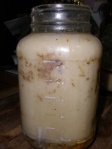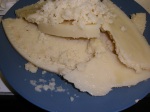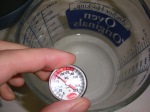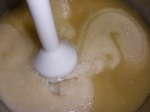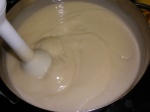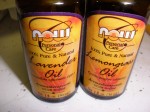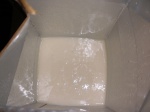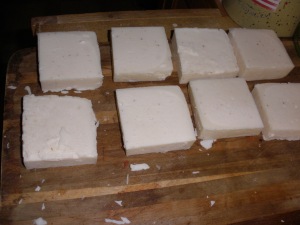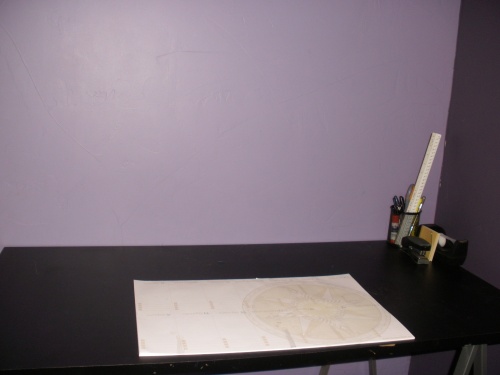I have shopped at resale stores for years. Goodwill is one of my “must stops” when I actually drive around, but there are a few others in town that I frequent and several others that I visit once in awhile.
There are lots of reasons I love resale shopping. First of all, it is much cheaper than retail shopping. Jean Jacket? $7. You can find all kinds of goodies for a fraction of their retail price. Sometimes resale shops even take “leftovers” from retail shops. I got a brand new, still-in-the-box deep fryer for $10.
But, “brand new, still-in-the-box” is not what I look for at resale stores. In fact, not having to deal with all the packaging that accompanies new merchandise is one of the things I love most about resale shopping. Have you seen all the plastic, styrofoam and even twist-ties that come on new stuff? The box is often twice the size of the coontents because of all the extra crap they cram in there. When you shop resale you don’t have to dispose of even more waste. Even though I recycle when I buy new, not everyone does. Resale reduces waste.
Haggling is acceptable. Now, you can’t get out of control with the haggling, but the staff at resale shops usually appreciates it when you let them know if a price is out of line. They want to sell their stuff and won’t if the price isn’t good. Most of my canning jars came from Goodwill. Sometimes when I go in there the jars are marked $.99 each. I won’t buy jars for that price; I can buy them new for less than that. But, if you tell the cashier what the jars retail for new, they’ll mark them down. I’ll buy quite a few jars at fifty cents apiece, but I’ll clean them out if they are a quarter each.
Lots of things that seem like a good idea but take up a lot of space can be found at resale shops for a reasonable price. I buy a LOT of housewares at resale shops. For example:
New pitcher for the ancient Osterizer blender that I dropped and broke. (BTW, if you drop your favorite glass blender pitcher on the floor and it breaks, you can screw a standard-mouthed mason jar onto the base as a temporary fix. Screwing a canning jar to the blades also works if you want to make individual smoothies in different flavors or want to premix a bunch for storage.)
(BTW, if you drop your favorite glass blender pitcher on the floor and it breaks, you can screw a standard-mouthed mason jar onto the base as a temporary fix. Screwing a canning jar to the blades also works if you want to make individual smoothies in different flavors or want to premix a bunch for storage.)
Ice cream maker
Bread machine for school
Fermenting crock
Super-deluxe, stainless-steel colander that I use for everything
Drinking glasses
Jelly/cheese straining bag (So, it’s really a cotton pillowcase, but whatever.)
Many resale shops offer you a discount on a future purchase when you donate your old stuff. Cleaned out your closet? Take the old stuff to a resale shop. Somebody will probably love your “old” outfits and you could get 10% off your next purchase.
Lots of thrift stores benefit charities. Women’s Resource Center benefits battered women and their children. Goodwill helps people find jobs. Shopping resale benefits people in your community.
 Today the reason I love resale shopping is this beautiful Weck canning jar. I have been wanting to try Weck Jars for a while now, but they are quite pricey. This 1 Liter, BPA-free jar cost me $5. It was probably too much since it rivals the actual retail price of the jar and was most of the money I had left from my March allowance, but I can try it out and see how it works before I invest a fortune on more fancy-shmancy canning jars. If I don’t like it for canning, I can always store dried beans or coffee or something in it.
Today the reason I love resale shopping is this beautiful Weck canning jar. I have been wanting to try Weck Jars for a while now, but they are quite pricey. This 1 Liter, BPA-free jar cost me $5. It was probably too much since it rivals the actual retail price of the jar and was most of the money I had left from my March allowance, but I can try it out and see how it works before I invest a fortune on more fancy-shmancy canning jars. If I don’t like it for canning, I can always store dried beans or coffee or something in it.

